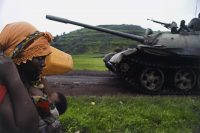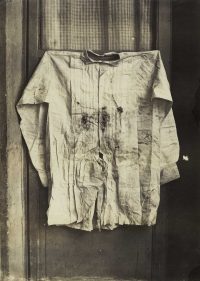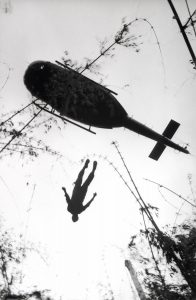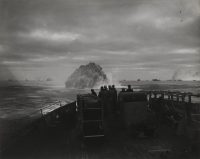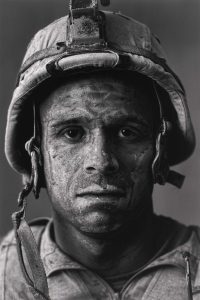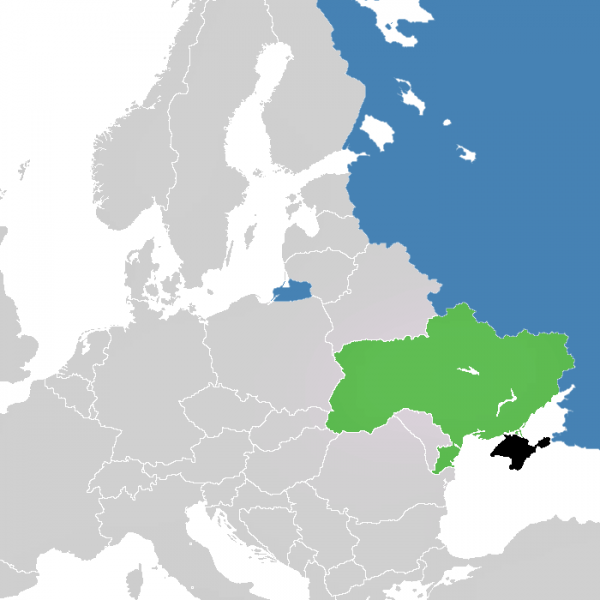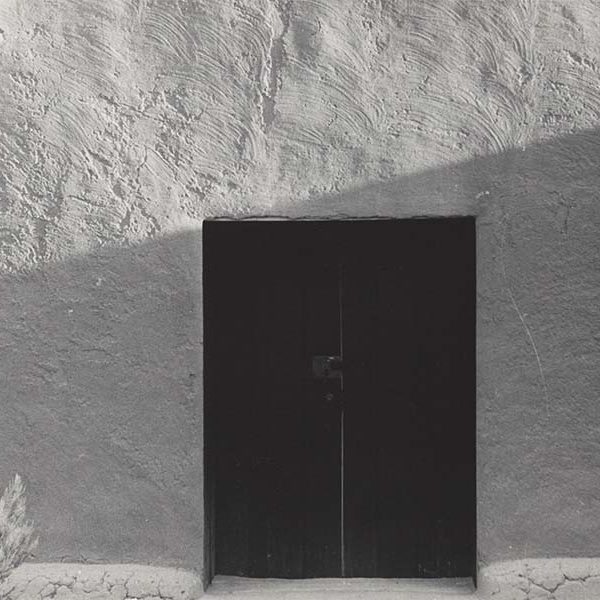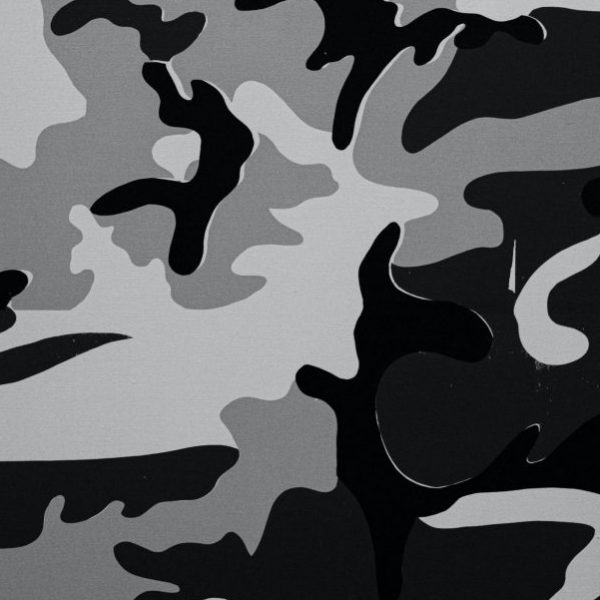Veterans Day Photography
 Today is Veteran’s Day in the United States, on which day we honor all of those who have served our nation in armed service. It is also Armistice Day and Remembrance Day, which recognize the end of World War I. A visually and emotionally powerful monument to war and those whose lives it affects has been making its way around the country over the past year. It is a photography exhibition entitled WAR/PHOTOGRAPHY: Images of Armed Conflict and its Aftermath, and it was organized by the Museum of Fine Arts, Houston, where it opened one year ago today, on November 11th, 2012. The exhibition was at the Annenberg Space for Photography in Los Angeles from March 23rd through June 2nd, and then at the Corcoran Gallery of Art in Washington, D.C. from June 29th through September 29th. It has just opened at its final venue, the Brooklyn Museum, where it will be on view through February 2nd.
Today is Veteran’s Day in the United States, on which day we honor all of those who have served our nation in armed service. It is also Armistice Day and Remembrance Day, which recognize the end of World War I. A visually and emotionally powerful monument to war and those whose lives it affects has been making its way around the country over the past year. It is a photography exhibition entitled WAR/PHOTOGRAPHY: Images of Armed Conflict and its Aftermath, and it was organized by the Museum of Fine Arts, Houston, where it opened one year ago today, on November 11th, 2012. The exhibition was at the Annenberg Space for Photography in Los Angeles from March 23rd through June 2nd, and then at the Corcoran Gallery of Art in Washington, D.C. from June 29th through September 29th. It has just opened at its final venue, the Brooklyn Museum, where it will be on view through February 2nd.
The exhibition includes images recorded by more than 280 photographers, from 28 nations, spanning 6 continents and more than 165 years, from the Mexican-American War in the mid-1800s to present-day conflicts; it includes iconic photographs as well as previously unknown images taken by military photographers, commercial photographers, amateurs, and artists.
We commemorate Veteran’s Day, Armistice Day, and Remembrance Day with a slideshow of images from WAR/PHOTOGRAPHY, along with a short q&a with the brilliant co-curator of the exhibition and co-editor of the award-winning exhibition catalogue, Anne Wilkes Tucker.
Y@artBooks: You mentioned in an interview with the Los Angeles Times in May of 2013 that many veterans and groups of veterans came to the Museum of Fine Arts, Houston to see this exhibition; their reactions were overwhelmingly positive, and in many cases veterans were interested in having copies of the catalogue for their vet centers. Were there any specific reactions from individual veterans that particularly struck you, or stuck with you?
Anne Wilkes Tucker: At each of the three venues thus far, 20-30% of the visitors have been active service military or veterans. The veterans in Houston asked for an evening when they and their families could attend, which we were happy to arrange. All active service and veterans have been admitted free to the exhibition.
Comments from veteran centers that have received the book include:
“Each article was very interesting and the photography was just outstanding. I have seen books in the past containing war time pictures but never any like this.”
“This is an incredible catalogue. I am most impressed.”
“This book is an excellent addition to our library and has already been a topic of several conversations and discussions among our veterans.”
“We plan to make this our “book of the month” for folks to come to the library and view.”
“This book puts our service in Iraq and Afghanistan into a meaningful tapestry.”
“This book is a wonderful addition to our museum’s research library.”
Comments from visitors to the exhibition include:
“One of the most profound exhibits I have ever seen anywhere. Thank you”
“I appreciate this collection and how you pay tribute to past and active Veterans. God bless you.”
“As a veteran of two combat conflicts I have for the first time seen this moving and real representation of combat.”
”This exhibition reminds me of why I am proud to serve.”
“I spent three hours looking and am glad I came.”
“Great exhibit of the humanity affected by war.”
“Amazing how these photographs can be so beautiful and horrific all at once.”
“This is a very good awaking for me. Now when I am in my office and a soldier comes in I will be able to communicate better with them.”
“Great exhibit but a shattering experience.”
Y: How do you think the public’s reactions to war have been changed by the advent of photographic representations of armed conflict and other aspects of life during wartime? Do you think this change is also reflected in a different attitude toward veterans returning from war since access to wartime photography has become widespread?
AWT: Response to the exhibition has been strong and varied. Pacifists see it as an argument for being against war. Those who serve have seen it as a tribute to their service. Those two opinions are not incompatible, but show that we all bring our own expectations, experiences, and opinions to view any photograph and those shape our responses. The photographs do have great informational value to bring to people’s attentions aspects of war that never occurred to them. People who have seen the show have then researched aspects that engaged or intrigued or horrified them.
Photographs have swayed public opinion regarding certain wars, most specifically the Viet Nam war, and negative public opinion was very had on returning veterans. But photographs are never the sole cause of such responses.
Y: How did your contact with the many photographers you had the opportunity to meet as you were working on War/Photography shape your vision of the project – of the intersection of war and photography?
AWT: We met and interviewed hundreds of photographers of wars ranging from WWII to the present and their perceptions and experiences helped us shape the project as did our work with military historians, curators at museums and archives, news editors and others. That is why it took us 10 years. We had a huge amount of information and thousands of photographs to process and a lot of research to test our ideas and the whole structure of the project. All those we worked with played important roles in the final result.
Anne Wilkes Tucker is the Gus and Lyndall Wortham Curator of Photography at the Museum of Fine Arts, Houston.
- Walter Astrada, Argentinean (born 1974), Congolese women fleeing to Goma, from the series Violence against women in Congo, Rape as weapon of war in DRC, 2008, chromogenic print (printed 2010), the Museum of Fine Arts, Houston, museum purchase with funds provided by Photo Forum 2010. © Walter Astrada
- Francois Aubert, French (1829–1906), The Shirt of the Emperor, Worn during His Execution, Mexico, 1867, albumen print from glass negative, Lent by The Metropolitan Museum of Art, Gilman Collection, Gift of the Howard Gilman Foundation, 2005. © The Metropolitan Museum of Art / Art Resource, NY
- Micha Bar-Am, Israeli (born Germany, 1930), The return from Entebbe, Ben-Gurion Airport, Israel, from the series Promised Land, 1976, inkjet print, courtesty of the artist and Andrea Meislin Gallery, New York. © Micha Bar-Am / Magnum Photos
- Henri Huet, French (1927–1971), The body of an American paratrooper killed in action in the jungle near the Cambodian border is raised up to an evacuation helicopter, Vietnam, 1966, gelatin silver print (printed 2004), the Museum of Fine Arts, Houston, museum purchase. © Associated Press
- Warrant Photographer Jess W. January USCGR, American, USCG Cutter Spencer destroys Nazi sub, April 17, 1943, gelatin silver print, the Museum of Fine Arts, Houston, gift of Mike Bollinger, Pat Burke, Jason Fertitta, Dan Gilbane, Matt Landrith, Michael McConnell, Michael Mithoff, Kolja Rockov, Tony Sanchez, and Barry Schneider in honor of “One Great Night in November, 2007.”
- Louie Palu, Canadian (born 1968), U.S. Marine Gysgt. Carlos “OJ” Orjuela, age 31, Garmsir District, Helmand Province, Afghanistan, from Project: Home Front, 2008, inkjet print, artist’s proof, the Museum of Fine Arts, Houston, gift of Joan Morgenstern.© photographer Louie Palu


